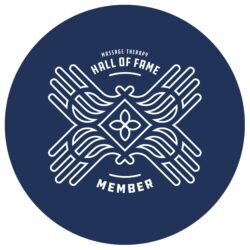There have been numerous attempts to come up with a good working definition of massage therapy. While I certainly appreciate the effort that has gone into them, in my opinion, most have fallen short in one way or another. Part of the problem is that massage therapists are independent-minded and are harder to organize than a bunch of cats. If you look at the 44 state massage laws that currently exist, you’ll find 44 different versions of what is called a scope of practice definition. Add to that the newest definitions found in the MTBOK and the ELAP, and we’ve got a murky mess that makes it nearly impossible to achieve portability of licensure. In fairness to the creators of both of those documents, which were collaborative efforts with support from all of the professional massage organizations, they were put out for public comment, which really didn’t amount to a ripple in the general scheme of things. My attitude is, if you didn’t take time to comment, then don’t gripe about the results.
We arrived here because there was no common template that was used during the rush to get state massage license laws passed over the past 15 years. Licensure standards are much more consistent in other healthcare professions because each one has been working from something called a Model Practice Act (MPA). I’m wondering… where can we get one of those?
Well, after nearly a decade after it came onto the landscape, the Federation of State Massage Therapy Boards has finally come up with their own MPA. They’re wrapping up the open comment period on the first public draft of this document, which has been posted to the their website. Much of it is run-of-the-mill legislative kind of language, but some sections really need further work. I’ve sent them my comments, and I hope you have too.
What I’m most concerned about in the FSMTB Model Practice Act is the scope of practice definition. As presented, it could restrict what massage therapists are allowed to do in their practices in the future. That’s a giant problem. If we define ourselves in a narrow way, other healthcare providers and business interests will ensure that we stay in our own little box.
Fortunately, I just heard from my North Carolina colleague Rick Rosen on this subject. He has developed what I think is a much more appropriate definition that strengthens and clarifies the diverse range of massage therapy practice in a way that expands possibilities, rather than shrinks them. By the way, Rosen was one of the co-founders of FSMTB, and was also the founding chairman of our state licensing board in NC, where he contributed to the writing of its laws and rules. Here’s what he said in his comments to the MPA Task Force:
“I am concerned that the definition set forth in Section 103 of the MPA is potentially limiting, as it characterizes the work performed by licensees as only that which relates to the manual application of techniques to the soft tissues of the body. Massage therapists are much more than pressure-delivery technicians. For example, they interact with clients in varied ways and provide assessment, treatment planning, and make recommendations for changes in a client’s ergonomic usage and movement patterns that can reduce chronic muscle tension. In addition, massage therapists can work with body awareness to assist clients in reducing stress and developing a healthier sense of self.”
“During the start-up phase of FSMTB in 2005, we looked carefully at the structure of board federations in other health care professions. I remembered from that research that most health care professions had robust and extensive scope definitions, as compared with the relatively one-dimensional definitions found in state massage practice acts.
With that in mind, I accessed the current model practice acts from the fields of nursing, physical therapy and occupational therapy. Using these templates as a guide, I developed a new definition that is broadly inclusive of the range of treatment models in our field, and establishes an expanded scope that more accurately represents the major areas of application in clinical practice.”
With that said, I’m sharing the full text of Rosen’s proposal for a new scope of practice definition:
PRACTICE OF MASSAGE THERAPY. A healthcare service of the healing arts provided to clients by a person who is licensed pursuant to this Act.
(1) The practice includes:
(a) Assessment of the functional and structural characteristics of the myofascial network and related systems of the body through tactile, visual and verbal methods;
(b) Treatment of the myofascial network and related systems of the body using manual methods, or by mechanical or electrical devices or tools that emulate or enhance the action of human hands;
(c) Active or passive movement of the body within the normal anatomical range of movement;
(d) Application of lubricants and other topical agents to the skin;
(e) Use of hydrotherapy and other adjunctive methods to produce therapeutic effects;
(f) Client education to facilitate body awareness and self-care;
(g) Treatment planning, communicating or collaborating with massage therapists and other licensed healthcare providers, and engaging in research, teaching and administration.
(2) Primary areas of application for massage therapy include:
(a) Wellness/Stress Reduction: treatment that supports the general health and well-being of the client, facilitates the relaxation response, addresses patterns of chronic tension related to stress, reduces pain and discomfort, promotes a more positive sense of self;
(b) Corrective/Rehabilitative: treatment that addresses specific symptoms or conditions, provides rehabilitation from the effects of injury, trauma or surgery
(c) Performance Optimization: treatment that improves the performance of specific activities or occupations, facilitates postural alignment and more efficient ergonomic patterns of use;
(d) Palliative: treatment for clients in recovery from illness or in the end stage of life that focuses on providing psychosocial support and relief from discomfort;
(e) Integrative: treatment that promotes awareness of the connections within the physical, cognitive and emotional aspects of the client, as well as treatment in conjunction with other licensed medical or mental health providers in a coordinated plan of care.
(3) The practice does not include:
(a) The diagnosis of illness or disease;
(b) Medical procedures, high-velocity low-amplitude chiropractic adjustive procedures, or prescription of medicines.
(d) The use of modalities for which a license to practice medicine, chiropractic, nursing, physical therapy, occupational therapy, acupuncture or podiatry is required by law; or
(d) Sexual activity of any kind.
I think Rosen has nailed it here. Without going beyond what we should do, this is more inclusive and a much more accurate description of what we do actually do. This more inclusive definition could save us headaches down the road if we are challenged by other professions for infringing on their scope of practice.
Today, June 15, is the last day for public comment on the MPA. Please pass this around… this should be the start of some interesting and important discussion. There’s nothing less than the future of the massage therapy profession at stake, so we have to get this piece right! Don’t sit on your hands. Take the time to comment, and if you don’t, then you are giving up any right to complain about it after the fact.


I agree with you, Rosen has nailed it! I would love it if the State of Washington adopted this. It is concise and very clear. Thanks so much for sharing. I will pass this along.